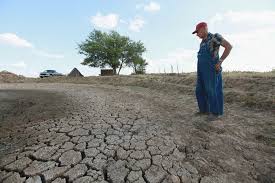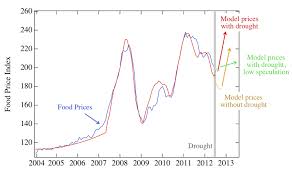In America -

It is difficult to precisely measure the economic toll of a disaster like this. However, this event likely will rank among the most costly natural disasters in the nation's history. The 1988 drought
was estimated to have cost about $86 billion (2006 dollars). The damage from Hurricane Katrina in 2005 reached a similar scale. At the peak of this year's extreme weather, 33 states and more than half the nation's counties were affected by drought,
according to the USDA.

Much of the damage has already been done to crops, herds, and flocks. Most of the nation's corn, soybean, hay, and cattle are produced within the affected region. The region also supplies much of the feed for livestock and poultry producers outside of the drought zone. Many herds and flocks have had to be liquidated for lack of affordable feed and forage. Many corn ethanol production plants have shut down or scaled back production due to the lack of corn or poor profit margins.
The
USDA Economic Research Service (ERS) estimates that food prices will increase in the months ahead at a higher than normal rate. Overall food inflation for 2012 may be between 2.5 and 3.5 percent, and, for 2013, the rate may be between 3.0 and 4.0 percent.